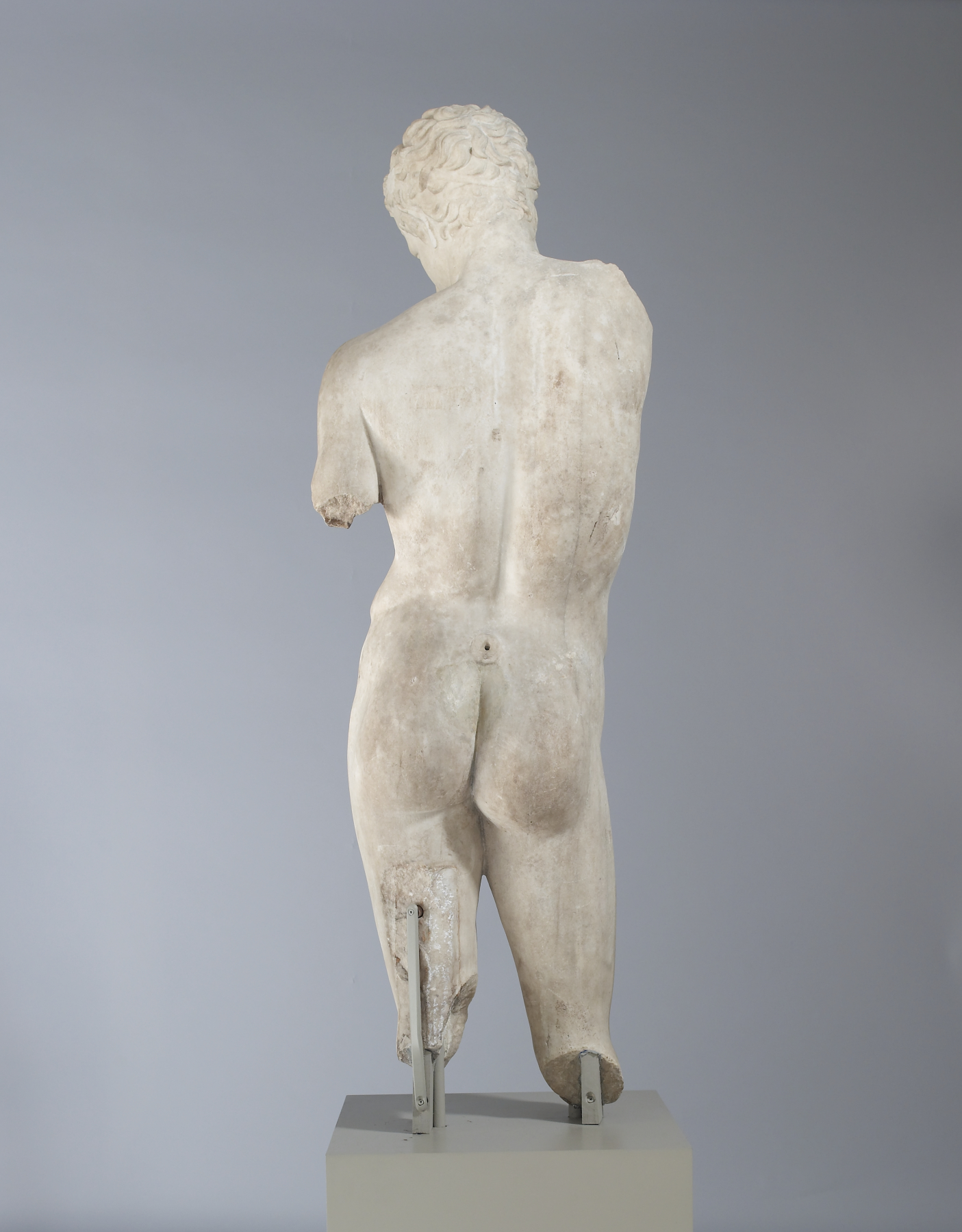Satyr Pouring Wine
The satyr exemplifies the carefree world of Dionysus, god of wine. The original statue, now lost, was by the celebrated artist Praxiteles. The goat-eared satyr pours from a jug that was held in his upraised right hand into a shallow dish he held below. The sinuous curves and unmuscled adolescent body are hallmarks of Praxiteles' most celebrated works, as are the grace and charm of the subject.
Provenance
Provenance (from the French provenir, 'to come from/forth') is the chronology of the ownership, custody, or location of a historical object. Learn more about provenance at the Walters.
Porto d'Anzio, ca. 1890 [recovered during the excavations for the building of the Villa Mengarini, said to be from Antium (?)]; Margherita Mengarini, Rome and Anzio, ca. 1890, by excavation; Joseph Brummer, Paris and New York, 1927, by purchase [Brummer inv. no. P4561]; Henry Walters, Baltimore, 1928, by purchase; Walters Art Museum, 1931, by bequest.
Exhibitions
| 1998-2001 | Highlights from the Collection. The Walters Art Gallery, Baltimore. |
| 1988-1989 | From Alexander to Cleopatra: Greek Art of the Hellenistic Age. The Walters Art Gallery, Baltimore. |
Conservation
| Date | Description | Narrative |
|---|---|---|
| 6/22/1961 | Treatment | cleaned |
| 7/20/1970 | Treatment | cleaned |
| 6/30/1988 | Treatment | cleaned; loss compensation |
| 1/1/1992 | Technical Report | x-ray diffraction; other |
| 3/27/1996 | Treatment | cleaned |
Measurements
43 5/16 x 15 3/8 x 8 11/16 in. (110 x 39 x 22.1 cm)
Credit Line
Acquired by Henry Walters, 1928
Location in Museum
Accession Number
In libraries, galleries, museums, and archives, an accession number is a unique identifier assigned to each object in the collection.
In libraries, galleries, museums, and archives, an accession number is a unique identifier assigned to each object in the collection.
23.22




